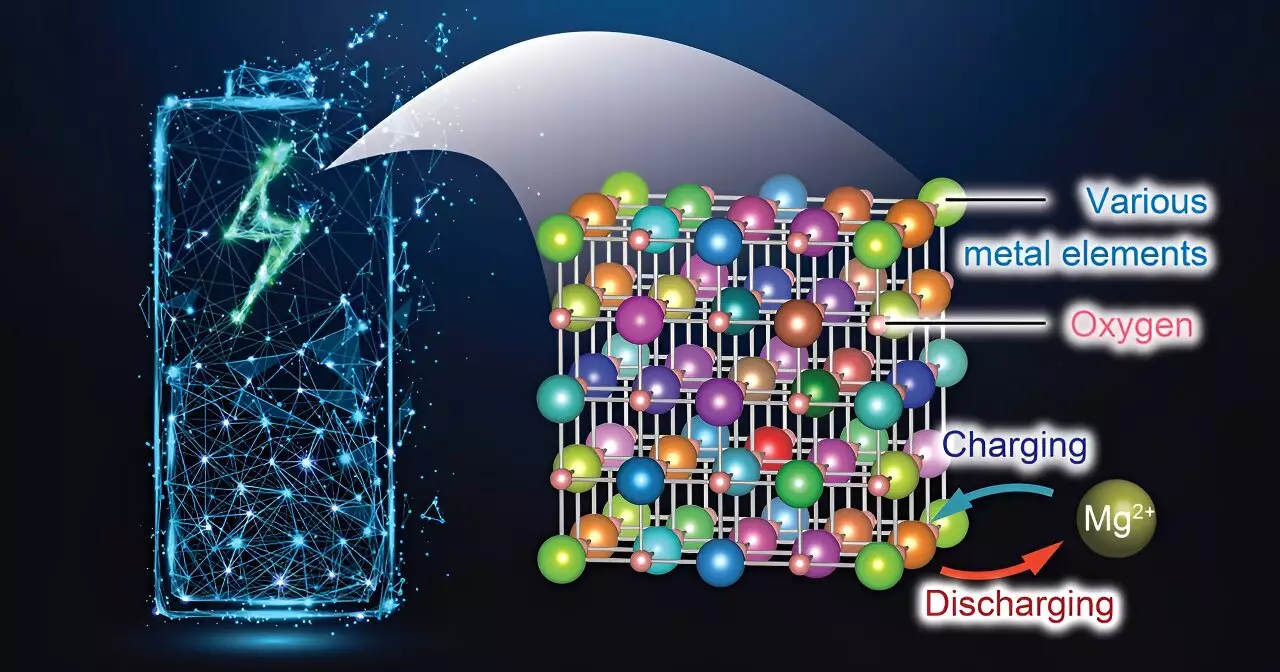In a groundbreaking development, researchers at Tohoku University have successfully revolutionized battery technology by designing a cutting-edge cathode material for rechargeable magnesium batteries (RMBs) that allows for efficient charging and discharging even under low-temperature conditions. This innovative material, which takes advantage of an enhanced rock-salt structure, signifies a significant advancement in energy storage solutions that are not only more cost-effective and safer but also boast higher capacities.
The study, recently published in the Journal of Materials Chemistry A, highlights a substantial improvement in magnesium (Mg) diffusion within a rock-salt structure. Previously, the densely packed atoms in this structure hindered Mg migration. However, by incorporating a strategic combination of seven different metallic elements, the researchers were able to create a crystal structure rich in stable cation vacancies. This alteration facilitated the insertion and extraction of Mg, marking the first instance where rock-salt oxide was utilized as a cathode material for RMBs.
One of the key challenges in RMBs has been the issue of Mg transport within solid materials. Traditionally, high temperatures were required to enhance Mg mobility in conventional cathode materials like those with a spinel structure. Nevertheless, the cathode material developed by Tohoku University functions efficiently at a mere 90°C, presenting a substantial decrease in the operating temperature needed.
Tomoya Kawaguchi, a professor at Tohoku University’s Institute for Materials Research (IMR), emphasizes the broader significance of the research. He points out that magnesium, being more readily available and sustainable compared to lithium, presents a cost-effective alternative for lithium-ion batteries. With magnesium batteries incorporating this new cathode material, they are poised to make significant contributions in various sectors such as grid storage, electric vehicles, and portable electronic devices, thereby aiding the global transition towards renewable energy sources and reduced carbon footprints.
The collaboration between Tomoya Kawaguchi and Tetsu Ichitsubo, also a professor at IMR, has opened up new possibilities in battery technology. By harnessing the intrinsic advantages of magnesium and overcoming previous material obstacles, this research lays the foundation for the next generation of batteries. The far-reaching impacts of this breakthrough extend beyond just technology to encompass environmental and societal spheres, marking a substantial progress in the quest for efficient and eco-friendly energy storage solutions.


Leave a Reply